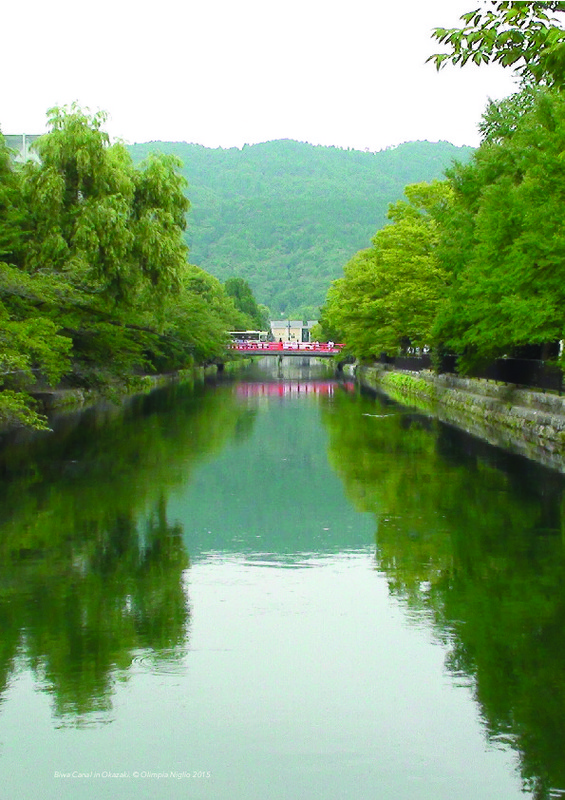JavaScript is disabled for your browser. Some features of this site may not work without it.
Buscar en RiuNet
Listar
Mi cuenta
Estadísticas
Ayuda RiuNet
Admin. UPV
Urban landscape of Okazaki in Kyoto
Mostrar el registro sencillo del ítem
Ficheros en el ítem
| dc.contributor.author | Niglio, Olimpia
|
es_ES |
| dc.contributor.author | Inoue, Noriko
|
es_ES |
| dc.coverage.spatial | east=135.76802939999993; north=35.01163629999999; name=488 Kamihonnōjimaechō, Nakagyō-ku, Kyōto-shi, Kyōto-fu 604-0925, Japó | |
| dc.date.accessioned | 2016-09-13T07:00:42Z | |
| dc.date.available | 2016-09-13T07:00:42Z | |
| dc.date.issued | 2015-12-29 | |
| dc.identifier.uri | http://hdl.handle.net/10251/69305 | |
| dc.description.abstract | [EN] Kyoto has been the capital of Japan from 794 until when the capital has moved in 1868 to Tokyo with the end of Tokugawa Shoguns and the beginning of the Meiji Restoration. The loss of the seat of government was a shock to citizens of Kyoto as the city had been the Imperial and Cultural center of the nation for over 1.000 years. The combination of the court and the great temples had enlivened and enriched the life of the city. At the beginning of the founding of the capital, in the Heian period (794-1185) to east of Kyoto, was built a noble and religious place. This area is Okazaki. Here the Emperor Kammu (736-805) had created the city of Heian-kyo (Kyoto) in 794. This area was full of Temples and Shrines. Only in the Edo period (1603-1867) Okazaki area assumed the role of suburban agricultural zone which provided the food production to the urban habitants. But after the Meiji Restoration (1868-1912), the role of Okazaki area changes completely. In 1885, Kyoto prefecture started the great public canalization project as the water supply between Kyoto and Otsu of Shiga prefecture. Kyoto prefecture also planed the industrial district construction in Okazaki area. From the late nineteenth century Okazaki area became a symbol of the modernization of Kyoto city. This contribution intends to analyze the urban landscape composed of the different styles of architecture especially constructed after the Meiji period (1868-1912). Tangible and intangible signs remained as modern gardens, significant museums and cultural institutions among the ancient temples provide opportunities to reflect on the important role of suburban area of the historic city. These studies are supported by archival documents and by current measures and policies for landscape conservation by Kyoto Municipality. | es_ES |
| dc.language | Inglés | es_ES |
| dc.publisher | Universitat Politècnica de València | |
| dc.relation.ispartof | VITRUVIO - International Journal of Architectural Technology and Sustainability | |
| dc.rights | Reconocimiento - No comercial (by-nc) | es_ES |
| dc.subject | Kyoto | es_ES |
| dc.subject | Okazaki | es_ES |
| dc.subject | Urban Landscape | es_ES |
| dc.subject | Urban regeneration | es_ES |
| dc.subject | Historical Heritage | es_ES |
| dc.subject | Modernization | es_ES |
| dc.title | Urban landscape of Okazaki in Kyoto | es_ES |
| dc.type | Artículo | es_ES |
| dc.date.updated | 2016-09-07T11:00:47Z | |
| dc.identifier.doi | 10.4995/vitruvio-ijats.2015.4472 | |
| dc.rights.accessRights | Abierto | es_ES |
| dc.description.bibliographicCitation | Niglio, O.; Inoue, N. (2015). Urban landscape of Okazaki in Kyoto. VITRUVIO - International Journal of Architectural Technology and Sustainability. (1):15-25. https://doi.org/10.4995/vitruvio-ijats.2015.4472 | es_ES |
| dc.description.accrualMethod | SWORD | es_ES |
| dc.relation.publisherversion | https://doi.org/10.4995/vitruvio-ijats.2015.4472 | es_ES |
| dc.description.upvformatpinicio | 15 | es_ES |
| dc.description.upvformatpfin | 25 | es_ES |
| dc.type.version | info:eu-repo/semantics/publishedVersion | es_ES |
| dc.description.issue | 1 | |
| dc.identifier.eissn | 2444-9091 | |
| dc.description.references | AA.VV. Reconstruction project of Canal Keage as civil engineering heritage of Japan, Japan Railway Construction Public Corporation, Investigation Committees of Civil Engineering Heritage, Tokyo 1997. | es_ES |
| dc.description.references | AA.VV. Study for the archeological sites of Hosho-ji Temple, Kyoto City Archeological Research Institute Incorporation, Kyoto 2010. | es_ES |
| dc.description.references | Amasaki H., The formation of the groups of gardens in Nanzenji-temple district in Okazaki area. In: Study for the cultural landscape research of Okazaki area, Kyoto municipality 2013, pp. 27-31. | es_ES |
| dc.description.references | Carola H. and Pelletier P., Cities, Autonomy, and Decentralization in Japan, Routledge, London 2006. | es_ES |
| dc.description.references | Cheshire C. A Practical Guide to Japanese Gardening: An inspirational and practical guide to creating the Japanese garden style, from design options and materials to planting techniques and decorative features, Anness Publishing, Leicester 2009. | es_ES |
| dc.description.references | Locher M., Traditional Japanese Architecture, Tuttle Publishing, Tokyo 2010. | es_ES |
| dc.description.references | Mizumoto K., Kyoto and Kyoto Way, Yoshikawa Kobunkan, Kyoto 2002. | es_ES |
| dc.description.references | Municipality of Kyoto, Landscape of Kyoto, Kyoto 2012 | es_ES |
| dc.description.references | Nishi K. y Hozumi K., What is Japanese architecture?, Kodansha USA, New York 2012 | es_ES |
| dc.description.references | Nishimura Y., Urban Conservation Plan (Toshi Hozen Keikaku), University of Tokyo 2004. | es_ES |
| dc.description.references | Young D. and Kimura M., Introduction to Japanese Architecture, Periplus Edition, Singapore 2004. | es_ES |
| dc.description.references | Shimizu S., The construction of shrines and modern Kyoto. In: The Historic Cities in the Modern Japan, Shibunkaku, 2013, pp. 57-61. | es_ES |
| dc.description.references | Takahashi Y., Yoshida N., Miyamoto M., Ito T. Illustrated History of Japanese Cities, University of Tokyo, 1993. | es_ES |








